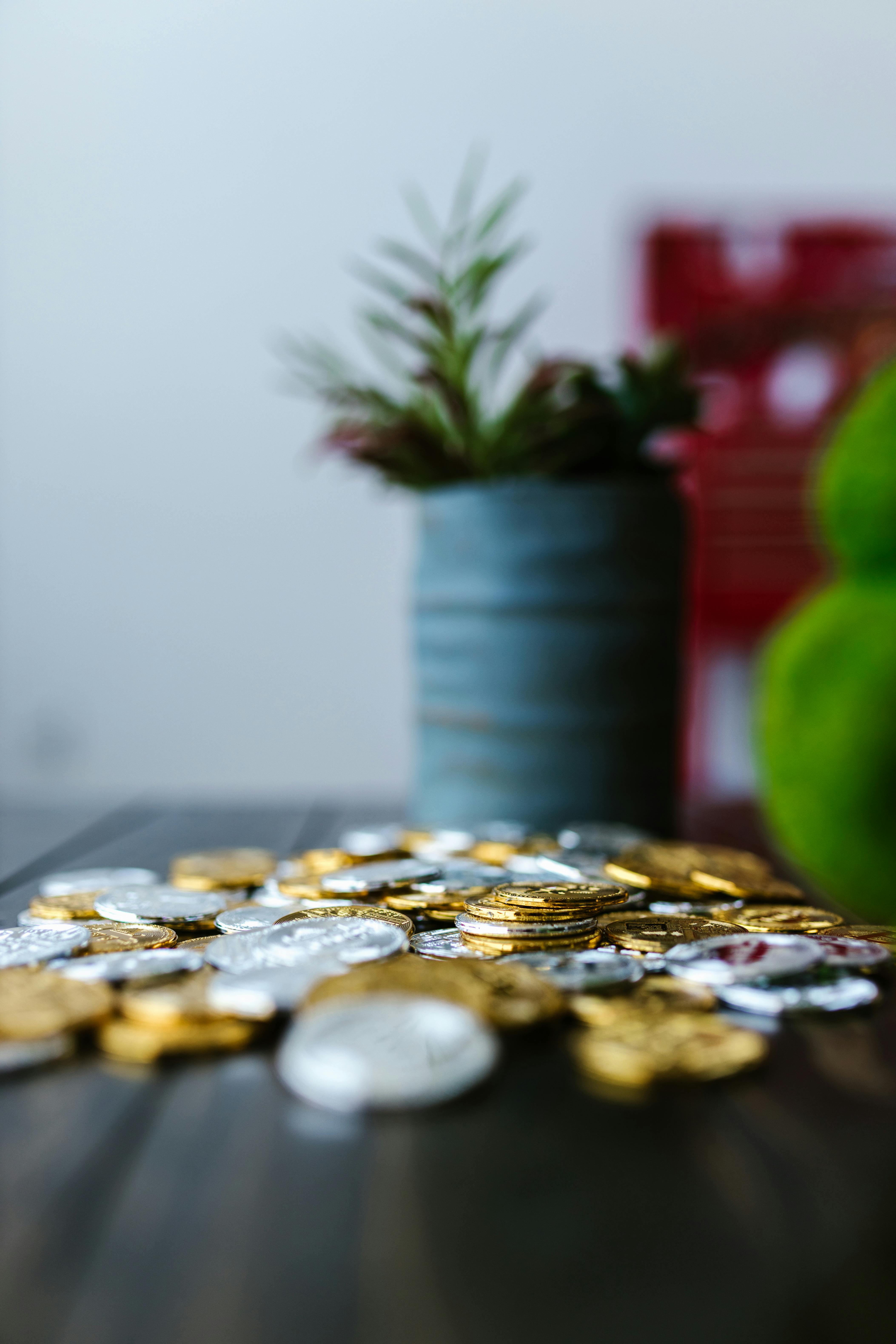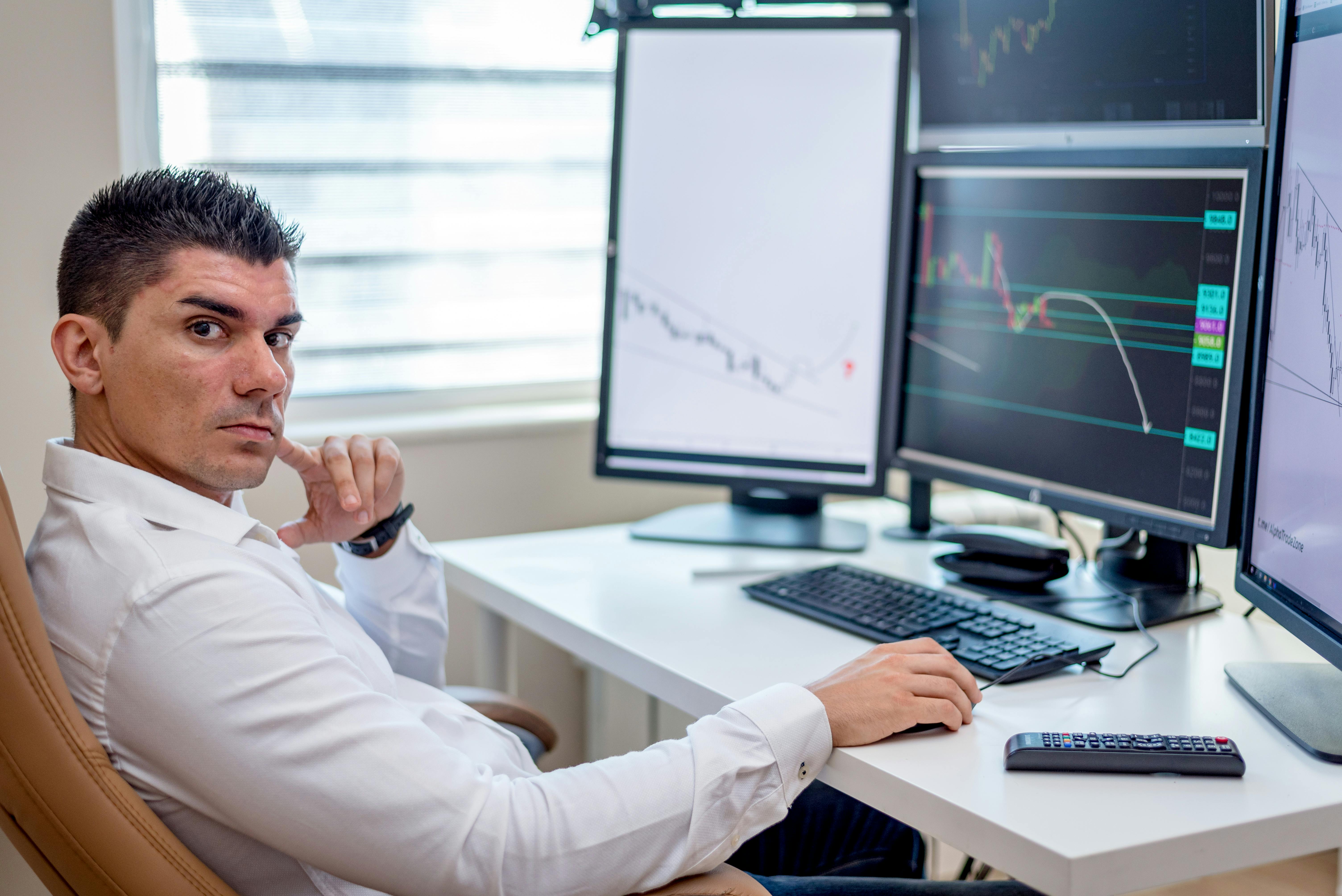Investing in Chile: Easy Balanced Portfolio Guide With Top Local Funds
Ever wonder why some people in Chile make steady gains investing—seemingly immune to the market’s ups and downs—while others ride a perpetual rollercoaster? Back when I started investing here, I certainly did. Like a lot of Chileans, my first steps felt more like stumbles: chasing hot tips, second-guessing “Fondos E” and “Fondos A,” and flipping through fund performances as if a “winner” would leap off the screen and hand me a tidy 10% a year. That’s not how it works. Instead, I eventually learned that the secret to real, sustainable growth (especially for those of us living and investing in Chile) comes down to one thing: building a truly balanced portfolio using proven local strategies and funds. It sounds simple. But most of us—myself included—have learned the hard way that “simple” doesn’t mean “easy.”
This guide is my hard-won answer to all that. It’s full of concrete, Chile-specific advice, with absolutely no confusing jargon, hidden product pitches, or generic “just diversify” memes.
We’ll cover the basics of portfolio balancing for Chileans, walk step-by-step through local fund selection (including those iconic Fondos Mutuos and multifondos), and—crucially—address everything I wish someone had told me about local risks, currency quirks, and the need to actually rebalance as Chile’s markets shift. Anyone who wants to build wealth steadily, outpace inflation, and maybe even sleep a little better at night will find actionable steps and honest stories here. Sound good? Let’s dive in.
Why Balance Your Portfolio in Chile?
Let’s cut to the chase—preserving (and growing) wealth in Chile requires more than parking pesos in a savings account or just “hoping” Fondo A has a good year. Chile’s economy, while resilient, has always had its quirks: copper dependency, abrupt policy changes, periodic unrest, and more recently, inflation that’s stubbornly persistent1.
Back in 2019, as social upheaval intensified, a colleague told me, “If all your cash is riding on one Chilean fund—or worse, cash under the mattress—you’re just waiting for trouble.” Honestly, he was spot on. Since then, I’ve made it a rule: balance isn’t just smart investing, it’s self-defense against Chilean volatility.
The Chilean Central Bank maintains one of Latin America’s most independent monetary policies, but even so, the peso’s value can swing more than 10% in a single quarter, driven mostly by copper prices and global risk appetite2.
Core Concepts: Diversification & Risk (Explained Chilean-Style)
I can’t count the number of times someone’s asked (at family BBQs, client dinners, even cab rides), “But 为什么 diversify if the S&P 500—or Fondo A—is up 20% this year?” Here’s the thing: nothing in investing goes up forever. A well-diversified portfolio, tailored to the Chilean context, can cushion those brutal market swings, smooth out returns, and ultimately help us sleep at night, no matter what flavor of crisis is on the news3.
关键见解: In my experience, “diversification” here means mixing not just stocks and bonds, but also keeping an eye on currency (CLP vs. USD), Chilean government vs. corporate bonds, and exposure to both local and international equity.
There’s an old saying among Chilean brokers: “El que no diversifica, se arriesga al máximo.” (“If you don’t diversify, you’re taking maximum risk.”) That’s been echoed in my own results—just ask anyone who was 100% in Fondo E during the last interest rate shock.
Overview: Chile’s Most Popular Investment Funds
Chile’s fund ecosystem is surprisingly robust—and for many, more accessible than direct stock investing. Our main types are:
- Fondos Mutuos: Managed mutual funds, covering equities, bonds, mixed assets, and more.
- Fondos de Pensiones (AFP Multifondos): Obligatory for retirement, ranging from ultra-conservative (Fondo E) to high-growth-risk (Fondo A).
- Fondos de Inversión: Larger, often more specialized vehicles—real estate, infrastructure, private equity.
- ETFs (Fondos Cotizados): Tradeable on Bolsa de Santiago or abroad; popular among younger, digitally savvy Chileans.
And while it’s tempting to chase last year’s best performers, the real trick lies in assembling a combo that works for you.
Sample Balanced Portfolio: Real Chilean Examples
Let me get practical for a moment. If I had to build a start-to-finish balanced portfolio for a Chilean investor in 2025, it wouldn’t be some far-fetched Wall Street model. I’d use what’s locally available, tax-friendly, and proven resilient—with enough room for international upside and local quirks.
My Rule of Thumb: For most adults with a medium risk tolerance, I recommend a mix of Chilean multifondos (for long-term retirement underpinning), plus two or three local Fondos Mutuos (including at least one international/equity fund), and—if you’re comfortable—one or two ETFs for foreign diversification. Adjust the weights based on age, goals, and risk comfort, but this template just works for Chileans, year after year.
| Fund Type | 目的 | 2024 Average Return* | 例子 |
|---|---|---|---|
| AFP Multifondo B | Core, balanced—mandatory pension | 7.2% | Capital, Habitat, Provida |
| Fondo Mutuo Accionario Global | Equity growth (global) | 13.1% | BCI Global Equities, Santander Acciones Globales |
| Fondo Mutuo Renta Fija Local | Chilean bonds/income | 4.8% | Security Renta Pesos, Itaú Bonos Chile |
| ETF S&P500 (local/abroad) | Global equity ballast | 11.2% | iShares SPY, It Now S&P 500 |
*Averages are 2024 YTD returns as reported by the Superintendencia de Pensiones and key AFP/fund providers4.
Breaking Down the Chilean Fund Landscape
No mix is perfect, but here’s a “skeleton” allocation that’s stood the test of time (and a few market panics):
- Maintain your AFP multifondo allocation as your long-term core. Stick to B or C (unless you’re extremely risk-averse or within 5 years of retirement, in which case, consider D/E).
- Add a Fondo Mutuo Accionario Global for upside. Chile’s economy is cyclical—global equities have historically outperformed, especially during local downturns5.
- Include a local Fixed Income (Renta Fija) fund. These play defense against Chilean inflation and peso volatility.
- Sprinkle in a global ETF. The S&P 500 or MSCI World, accessible via Bolsa de Santiago’s ETF segment, is worth the (small) learning curve for real diversification. I used to think “one local fund is enough” but, honestly, adding this was a game-changer for my results.
And if you’re feeling extra ambitious? Some investors with a stable income layer on a real estate fund or venture-specific Fondo de Inversión. (Caveat: higher volatility, lower liquidity.)
Why These Funds? Here’s What Actually Matters
- 流动性: Most Fondos Mutuos let you withdraw in a few working days. Direct stocks, some Fondos de Inversión, or real estate vehicles? Sometimes, it feels like waiting for a bus in Punta Arenas during a snowstorm.
- Tax Advantages: AFPs are tax-sheltered until withdrawal. Some Fondos Mutuos allow tax-break optimization (APV), other vehicles less so—a good accountant is your friend7.
- Transparency & Costs: Nearly all local funds must report monthly returns and fees. (That said, always check the “Comisión de Administración.” Even 0.5% makes a difference over 10 years!)
个人课程: I made the rookie mistake (2015!) of ignoring fees. My seemingly “safe” Fondo Mutuo charged nearly 2.2% annually. Over eight years, that ate half my excess return. These days, I scrutinize every fund’s total expense ratio—non-negotiable!
Step-by-Step: Choosing and Adjusting Your Funds
It’s easy to feel overwhelmed by choice—Chile boasts over 300 publicly available mutual funds and dozens of AFP multifondos. Here’s my streamlined, human-tested approach:
- Define your horizon & appetite for risk. Twenty-five and saving for a first home? Go heavier on equities. Closer to retirement? Shift gradually toward fixed income/fondos D/E.
- Select core funds with solid, multi-year track records (preferably 5+ years) and manageable fees. Rankings from the Chilean Administrators Association (AAFM) are an invaluable tool8.
- Layer on international exposure. I used to skip this, “because Chilean GDP is fine,” until the 2021 peso slide nearly halved my dollar purchasing power. Global diversification isn’t a luxury, it’s a must.
- Review and rebalance annually (or after major life/market events). Markets (and your goals) shift. Ignore this, and your once-balanced portfolio drifts into dangerous territory. (I learned that lesson after the pandemic flip-flopped my risk tolerance overnight!)
快速提示: Use your AFP’s simulator tools—most offer free, genuinely useful scenario builders. Also try broker “portfolio test drives” before jumping in, especially for ETFs and Fondos Mutuos. No shame in mock-investing for a few months to “see” how you handle risk.

Local Risks, Regulation, and What to Watch
Let’s face it: investing in Chile isn’t the same as picking a handful of US ETFs. There are political, currency, and regulatory curveballs that simply aren’t on Wall Street’s radar. The good news? Our markets are well-governed by the Comisión para el Mercado Financiero (CMF) and the Superintendencia de Pensiones—but “risk” has a local flavor that matters.
- Currency Fluctuation: The peso’s volatility is no joke. Your portfolio can rise (or fall) simply due to FX swings, not actual asset performance9.
- Pension Reform: Every few years, government shake-ups create AFP uncertainty. Keep 20-30% of your portfolio outside AFPs if you’re skittish about long-term regulation.
- Liquidity Crunches: Small-cap and specialized funds (especially some Fondos de Inversión) may be hard to exit fast. Don’t put near-term needs here.
Looking back, my “2020 liquidity crisis moment” happened 确切地 when I needed cash for a sudden family expense. I had to sell out of a real estate fund at a 5.5% loss—just to get my money within two weeks. Now, I keep more liquid assets within arms’ reach, no exceptions.
Chile’s Pension Funds (AFPs) collectively manage more than $170 billion USD, making them one of the top institutional asset pools in Latin America—a major stabilizer during market crises, but also a lightning rod for political debate10.
Regulatory Snapshot: What’s Changed (and Will Change Again)
Chile’s investment landscape isn’t static. Over the last five years, the government has overhauled fund transparency rules, increased local-currency hedging requirements, and debated AFP reforms again and again11. In late 2023, new rules forced local fund managers to disclose underlying asset classes more clearly—a big win for do-it-yourselfers and data nerds. I’ve found it’s easier now to compare “apples to apples” for risk—but fees and tax quirks still require vigilance.
Practical compliance tip: Use only CMF-registered funds or those listed on the Bolsa de Comercio de Santiago. Over the years, friends and acquaintances have slipped into “grey market” alternatives and regretted the headaches (and tax nightmares) later.
FAQs & Pro Tips for 2025 (From a Chilean’s Perspective)
Q: How much of my portfolio should be in “risk” vs. “safe” assets?
There’s no magic number—and I’ve changed my allocation multiple times as my own risk tolerance evolved (not to mention as political winds shifted). A typical balanced “Chile 2025” mix for a 35-45 year-old is:
- 35% AFP Multifondo B/C (core pension base)
- 20% Fondo Mutuo global equities
- 20% Fondo Mutuo local income/fixed
- 15% Global ETF
- 10% “opportunistic” (real estate, venture, local savings vehicle)
Quick Check: If you can’t sleep at night, you’re too heavy on the risk side! I monitor my panic level more than my “Sharpe Ratio.”
Q: What about inflation? Is it baked into local fund performance?
Chile’s central bank does a decent job battling inflation, but lately, persistent costs have caught many off guard. Most fixed-income funds adjust for inflation via “UF” (Unidad de Fomento) assets—make sure your bond allocation leans toward UF-indexed vehicles, or you’ll lose purchasing power over time13.
Q: Are foreign ETFs accessible and worth it?
As someone who finally took the ETF plunge in 2022, I can confirm: it’s a game-changer for access, but don’t underestimate the paperwork at tax time or the need for real research on underlying assets.
Q: What’s my “one thing” to avoid at all costs?
Easy: never, ever let inertia rule your allocations. I once left an entire year’s bonus sitting in a stale Fondo Mutuo because “eh, it’s working.” That “meh” attitude cost me 7% vs. a simple rebalance into global equities just before the 2021 bounce. Lesson learned—a balanced portfolio is active, not “set and forget.”
Final Thought for Part 3: Investing in Chile is a marathon, not a sprint, and the geography (political, literal, and economic) shifts under our feet every year. Your “perfect” mix in 2025 might look different by 2027. Build for resilience, not perfection, and re-check your map often.
Conclusion: The Chilean Way to Balance—and Win—in 2025 and Beyond
If you’ve made it this far, congratulations—you’re already ahead of the curve. What really strikes me, after more than a decade learning the Chilean investing ropes, is just how much clarity and confidence a balanced portfolio brings. It’s like finally getting decent boots before a mountain trek. Sure, you’ll still face rain, wind, and the odd earthquake (literally, in this country!), but you’re genuinely prepared.
The steps are clear, but not always easy: diversify with intent, recheck (and rebalance) as the landscape shifts, keep one eye on local quirks and another on global trends, and—possibly most importantly—learn from your Chilean peers. Borrow wisdom, avoid their mistakes, share your own. That’s the “secret sauce” I didn’t realize when I first dove in with blind optimism and a dash of luck. If you carry just one thing from this guide, let it be this: in Chile, adaptability isn’t just an investment idea; it’s a survival tactic.
While Chile is known for political swings, its investment industry ranks 2nd in Latin America for transparency and consumer protection according to the OECD Risk Center’s 2024 report15.
行动呼吁: Don’t let another year drift by with an unbalanced portfolio. Review your funds, test-drive new allocations, and—most importantly—ask questions. Needing advice doesn’t mean you’re behind. It means you’re investing smart, Chile style.
Ongoing Learning & Update Reminders
Chile’s markets evolve, sometimes overnight. Set a calendar alert to revisit this guide each tax season or after any major political change. Regulations, fund lineups, and best practices will keep shifting. Bookmark update-friendly sites (like the CMF and AAFM), and consider this an evergreen reference for your financial future—even as you build, tweak, and rethink your balances each year16.
参考文献及延伸阅读



